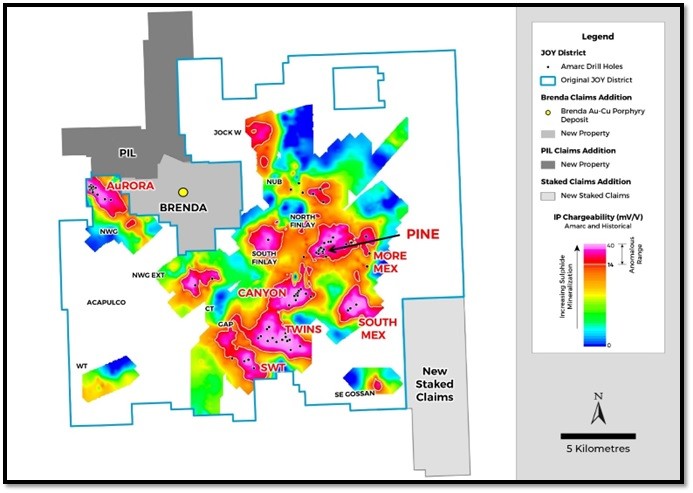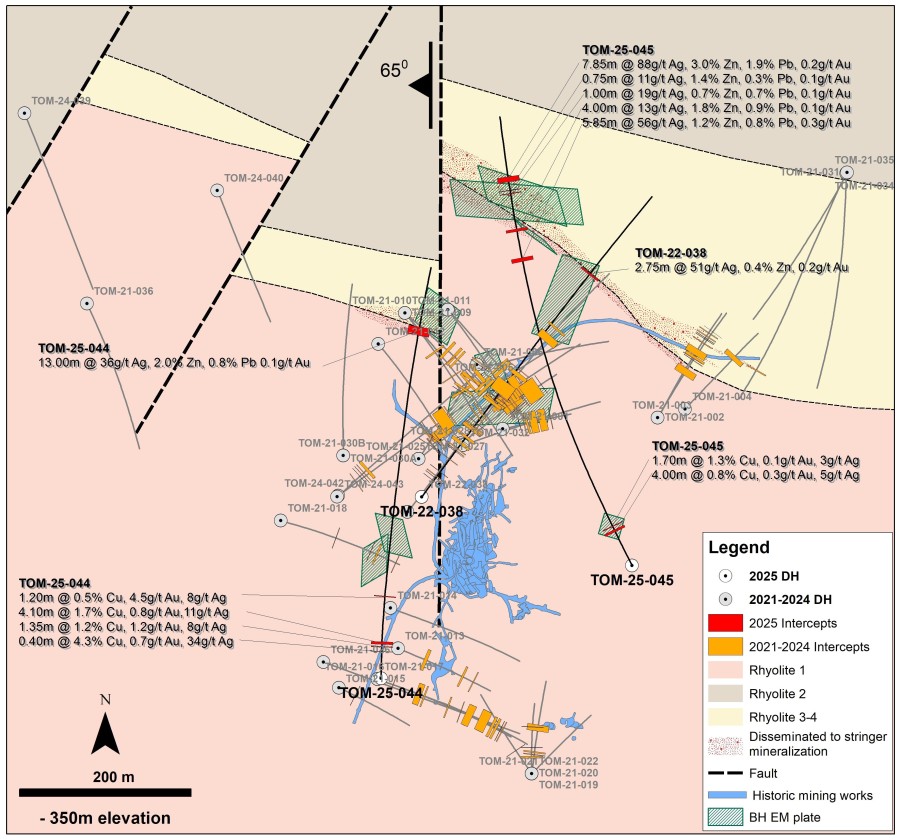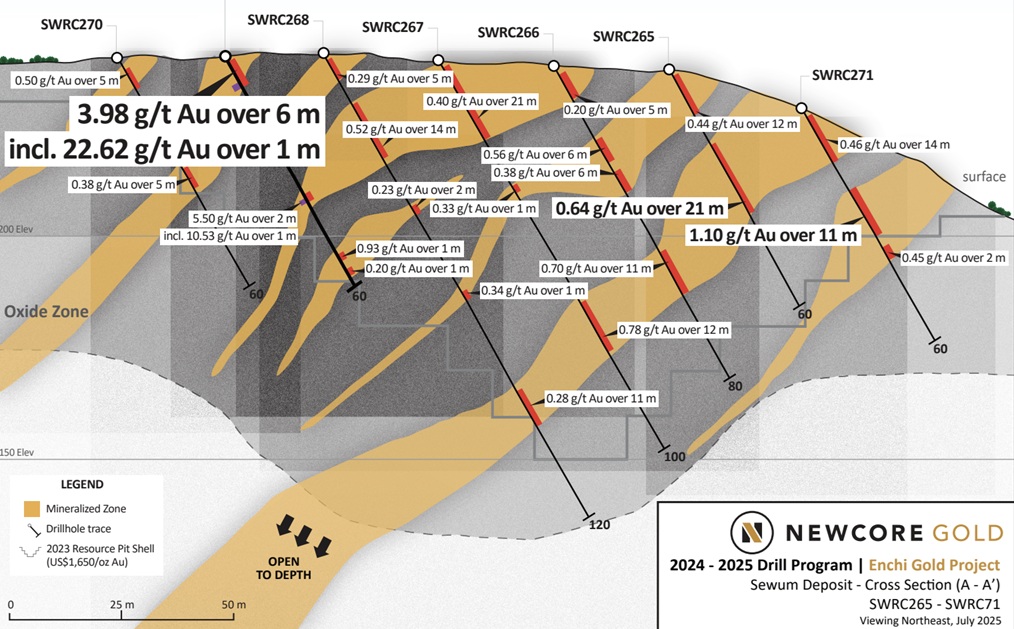Vancouver, British Columbia--(Newsfile Corp. - June 7, 2017) - Jaxon Minerals Inc. (TSXV: JAX) (FSE: 0U3) (“Jaxon” or the “Company”) is pleased to announce that its field crews have commenced the first phase of the 2017 field season at the Hazelton Property in the Skeena Arch, Central BC, Canada.
The company’s goal in this first phase is to establish the continuity and extent of previously identified high-grade, stratified massive sulphide beds, which have been historically mapped over an area of roughly one square kilometre.
Historical sampling at the Max Zone covers an area of roughly one square kilometre, and hosts multiple, high-grade, base-and-precious-metal-bearing exposures along a 1,200-metre long corridor, as highlighted in Table 1, below:
Historical Sampling Highlights – Max Zone
| Sample ID | Easting (m) | Northing (m) | Silver (g/t) |
| GRM20 | 616562 | 6125984 | 2,171 |
| 1050812 | 616739 | 6125866 | 3,398 |
| 1050818 | 616646 | 6125946 | 1,231 |
| GRM15 | 616624 | 6126674 | 938 |
Jaxon has compiled a comprehensive model of mineralization at surface at the Max Zone, which will augment the final interpretation of a 464 line-kilometre VTEM magnetics and resistivity survey due mid-June. This survey is expected to be later followed by a ground-based gradient induced polarization (IP) survey to test depth of mineralization and enhance drill hole targeting.
Current Sampling Program
The strata-bound VMS mineralization at the Max Zone has never been comprehensively sampled, and true extent of high-grade mineralization has, to date, remained unknown. The historical trenches at the Max Zone were excavated on a steeply-sloping hillside, exposing massive sulphides and associated alteration within a volcano-sedimentary package, over a lateral extent of 700 metres and a vertical extent of 200 metres.
The current sampling program aims to supplement the historical sampling to further expand the known strike length and thickness of the massive sulphide unit.
Historical Sampling at the Max Zone
The initial focus is to establish whether structural continuity exists over 200 metres of vertical elevation.
Mineralization at the Max Zone occurs over a lateral extent of approximately 1,020 metres and largely consists of stratabound massive sulphide mineralization. At 1,000m elevation, the Spine showing is the highest elevation outcrop on the property. The Spine showing also returned one of the highest gold assays, at 12.7 g/t Au.
Approximately 450 metres downslope from the Spine, (representing 260 metres vertical), Trench 742, massive sulphides containing high-grade silver sulphosalts assayed 2,015 g/t Ag which, when re-assayed, graded 2,171 g/t Ag.
Approximately 100 metres further downslope (representing 45 metres vertical) at Trench 742, another high-grade semi-massive sulphide sample yielded 1,231 g/t Ag, 5.8% Pb, and 9.55% Zn.
Continuing a further 120 metres downslope (10 metres vertical), another massive sulphide bed returned values of 3,398 g/t Ag, 2.26 g/t Au, 11.87% Zn, and 15.11% Pb in Trench 685.
Finally, 350 metres downslope (135 meters vertical) at the 550 elevation, assays of up to 4.16 g/t Au, 938.5 g/t Ag, 3.83 % Pb, and 4.3 % Zn were returned from grab samples. This location is believed to represent a feeder conduit for volcanic massive sulphide mineralization. The 1.0 to 1.5-metre sulphide zone is comprised of two parts: a 0.5 to 0.75-metre thick hanging wall section comprising massive sulphides, and an underlying 0.75-metre-thick, leached package. The upper massive sulphide zone comprises up to 20% pyrite, with variable quantities of sphalerite, galena, arsenopyrite, stibnite and possibly jamesonite.
Jaxon has compiled historical results with exceptional grades over 1,220 metres of recurrent surface exposure at the Max Zone, representing more than 450 metres of elevation change. The current field program will add substantial new information to this data, as Jaxon continues to explore its Hazelton Project.
The above data is historical in nature and has not been verified by Jaxon. The results above are from select grab samples, generally hand size, that were prepared at an accredited facility (crush, grind and split of assaying pulps). The pulps were digested by Aqua Regia and then ICP-MS multi-element geochemical analysis determined gold values, with overlimit values obtained by lead collection fire assay fusion. Gravimetric finish on 30g pulps determined silver content. Aqua Regia digestion followed by ICP-ES analysis determined the percentage concentration of lead and zinc.
Historic sampling details can be found in British Columbia Assessment Report Numbers 33559, 30787, and a NI 43-101 report titled "The Geology and Mineralization at the MAX- KNOLL Zn-Pb-Ag-Au Property, Harold Price Creek north-central British Columbia for Finore Mining Inc. (Formerly Otterburn Ventures Inc.) a previous property owner.
Technical information in this news release has been complied and reviewed by Derrick Strickland, P. Geo, a qualified person as defined in National Instrument 43-101.
About Jaxon
Jaxon is a base and precious metals exploration company with a regional focus on Western Canada. The company is currently focused on advancing its Hazelton property in north-central British Columbia and the Wishbone property in BC’s Golden Triangle.





